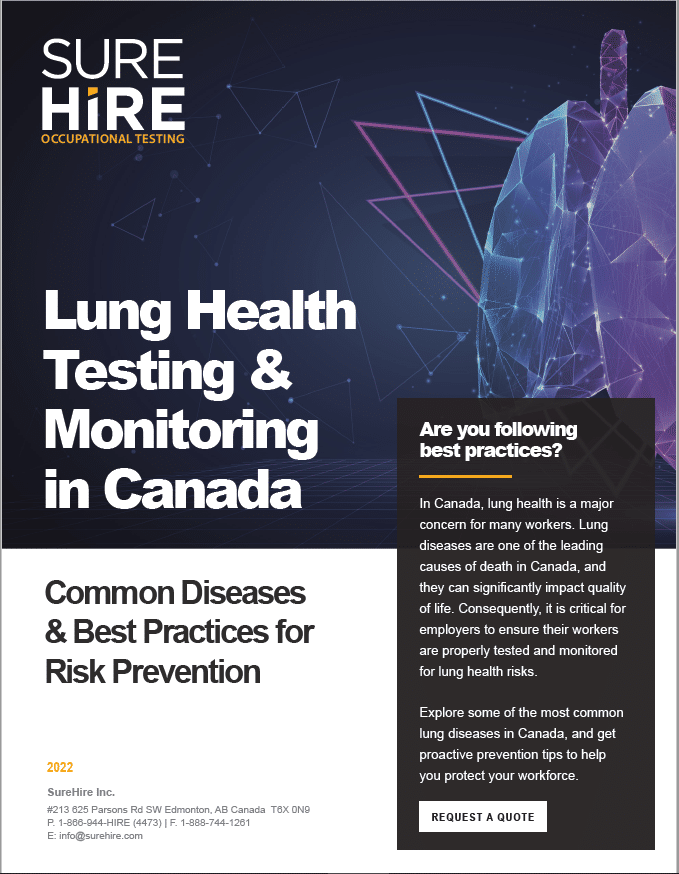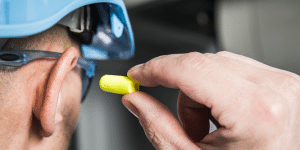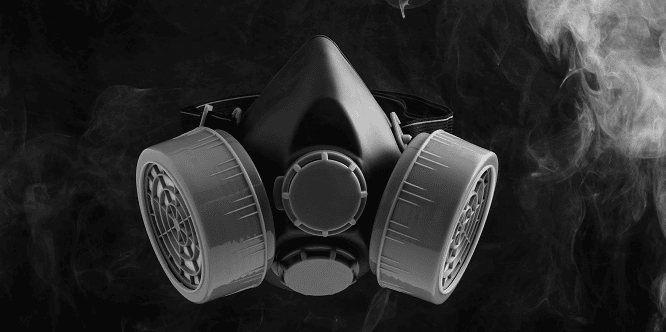TAKEAWAY: Delve into the differences between qualitative and quantitative respirator fit testing including the pros and cons of each test and tips for choosing the right test for your workforce.
Jump Ahead
- Qualitative and quantitative respirator fit testing defined
- Pros and cons of qualitative and quantitative fit tests
- How to perform a qualitative fit test
- How to perform a quantitative fit test
- 6 Tips for choosing the right type of respirator fit test for your needs
- 1. Know the guidelines and legislation of the province and state you work in.
- 2. Consider the costs of equipment and training.
- 3. Know the limitations and advantages of each fit test method.
- 4. Understand the conditions at the workplace where respirators are required.
- 5. Recognize the types of masks that require fit testing to work correctly.
- 6. Recognize your obligations as an employer to ensure adequate personal protection equipment, including properly fitted masks, is provided to employees who need it.
- You May Also be Interested in…
Fit testing is critical to ensuring the health and safety of your workers. Without a tight fit, the respirator cannot do its job and protect the worker. There are 2 types of respiratory fit testing: qualitative and quantitative. Here is how to decide which is better for your workplace.
Qualitative and quantitative respirator fit testing defined
Qualitative fit testing (QLFT) assesses the effectiveness of a respirator when a specific employee wears it. It is also referred to as mask fit testing and is leveraged when a worker must use a tight-fitting respirator in the workplace. It leverages users’ taste and smell to detect leakage using specific chemicals. If the wearer can taste the chemical, the respirator fails the test.
Quantitative fit testing (QNFT) is another type of mask fit testing used to determine whether a respirator properly fits an employee. This test objectively measures leakage amount (quantity) using a specific machine or software that calculates the measurements. It does not rely on human taste.
Pros and cons of qualitative and quantitative fit tests
Qualitative Fit Testing: Pros and Cons
| Pros | Cons |
| Low equipment costs | Chance of misinterpretation or deception |
| Pass/Fail Results | Maximum fit factor of 10 |
| Fast – multiple people can be tested at the same time | Subjective |
| Errors can be made by test subject and tester |
Quantitative Fit Testing: Pros and Cons
| Pros | Cons |
| No protection-factor limit | Equipment is costly to set up |
| Documentation of numeric results | Requires face piece or probe adapter |
| No chance of misinterpretation, or deception | Annual recalibration of equipment |
| Ease of use | Only one subject can be tested at a time |
| Accuracy |
How to perform a qualitative fit test
In a QLFT, workers wear the mask they intend to wear during the workday and are exposed to ambient air containing non-toxic airborne chemicals. Typically, the tester will leverage one of four chemicals designed to trigger a sensor reaction when breathed in through any leaks in the mask. These include isoamyl acetate, which has a fruity aroma, saccharin solution, which has a sweet taste, Bitrix, which has a distinctive bitter taste or stannic chloride, which is a smoky irritant. During the test, the worker will generally be asked to breathe normally and deeply while bending over and talking. The QLFT should simulate conditions the worker will typically encounter while wearing the mask.
How to perform a quantitative fit test
A quantitative fit test (QNFT) uses a hose inserted into the face piece of the mask while the user is wearing the mask, which delivers various air samples to a separate device for analysis. This testing procedure results in a numeric value for the level of contaminants within the mask. This numeric value is then compared to the concertation of contaminants outside the mask and results in a fit factor. The fit factor indicates the level of any leakage that exists when the worker wears the mask.

Interested in joining our Network?
SureHire offers network partner training on qualitative and quantitative fit testing. Learn more about joining our network and contact us today!
6 Tips for choosing the right type of respirator fit test for your needs
While most North American safety authorities allow quantitative and qualitative fit testing, knowing which test is suitable for your workers is more challenging. For example, qualitative testing is typically used for half-facepiece respirators, while quantitative testing can be used for both half- and full-facepiece respirators.
Here are 6 tips for choosing the right type of respirator fit test for your needs:
1. Know the guidelines and legislation of the province and state you work in.
Both provincial legislation and the Canadian Standards Association mandate fit testing in Canada. In the U.S., the Occupational Health and Safety Administration and the National Institute for Occupation Health and Safety set the standards for fit testing. However, some states also maintain additional requirements.
These legal requirements can be relatively complex and speak directly to the need for testing and the specific type of testing that may be required. For example, according to the OSHA 1910.134(f)(6) provision, qualitative fit testing “may only be used to fit test negative pressure air-purifying respirators that must achieve a fit factor of 100 or less.”
2. Consider the costs of equipment and training.
Quantitative testing is more expensive to set up but does not rely on the user’s subjective response.
3. Know the limitations and advantages of each fit test method.
4. Understand the conditions at the workplace where respirators are required.
For example, quantitative testing is recommended by NIOSH when facepiece leakage must be minimized for work in highly toxic atmospheres or those immediately dangerous to life or health.
5. Recognize the types of masks that require fit testing to work correctly.
These include:
- Filtering facepieces such as N95 or KN95 masks
- Half-face respirators
- Full-face respirators
- SCBA’s
6. Recognize your obligations as an employer to ensure adequate personal protection equipment, including properly fitted masks, is provided to employees who need it.

You May Also be Interested in…
- Do You Have Reasonable Suspicion?
 Employers cannot initiate reasonable suspicion testing without first going through the 5-step process. Reasonable suspicion training provides critical information about how to initiate reasonable suspicion testing, including the 5-step process and other tools that employers can use to help manage the misuse of alcohol and drugs in the workplace.
Employers cannot initiate reasonable suspicion testing without first going through the 5-step process. Reasonable suspicion training provides critical information about how to initiate reasonable suspicion testing, including the 5-step process and other tools that employers can use to help manage the misuse of alcohol and drugs in the workplace. - An Employer’s Guide: What You and Your Employees Need to Know About DOT Drug & Alcohol Testing
 When implementing or maintaining DOT Drug & Alcohol testing, there are key areas that employers should consider.
When implementing or maintaining DOT Drug & Alcohol testing, there are key areas that employers should consider. - SureHire Occupational Testing Acquires COHR Health: A Positive Step Towards Safe, Healthy, Productive Workforces and Communities
 We are thrilled to announce that today, May 6, 2024, SureHire Occupational Testing has officially acquired COHR Health, a well-known leader in occupational health services. Read on…
We are thrilled to announce that today, May 6, 2024, SureHire Occupational Testing has officially acquired COHR Health, a well-known leader in occupational health services. Read on… - Occupational Testing Use Case – Mining
 In this case study, we will explore how mining companies can use various types of occupational tests to reduce Total Recordable Incident Rates (TRIR) long term.
In this case study, we will explore how mining companies can use various types of occupational tests to reduce Total Recordable Incident Rates (TRIR) long term. - 9 Strategies to Keep Workers Cool on Drilling Sites During Hot Summer Months
 This article delves into strategies to keep workers cool and safe on drilling sites during the hot summer months.
This article delves into strategies to keep workers cool and safe on drilling sites during the hot summer months. - Hearing Conservation Basics: How to Manage Occupational Noise
 Learn how to proactively mitigate occupational noise risks and help prevent NIHL among workers.
Learn how to proactively mitigate occupational noise risks and help prevent NIHL among workers.

